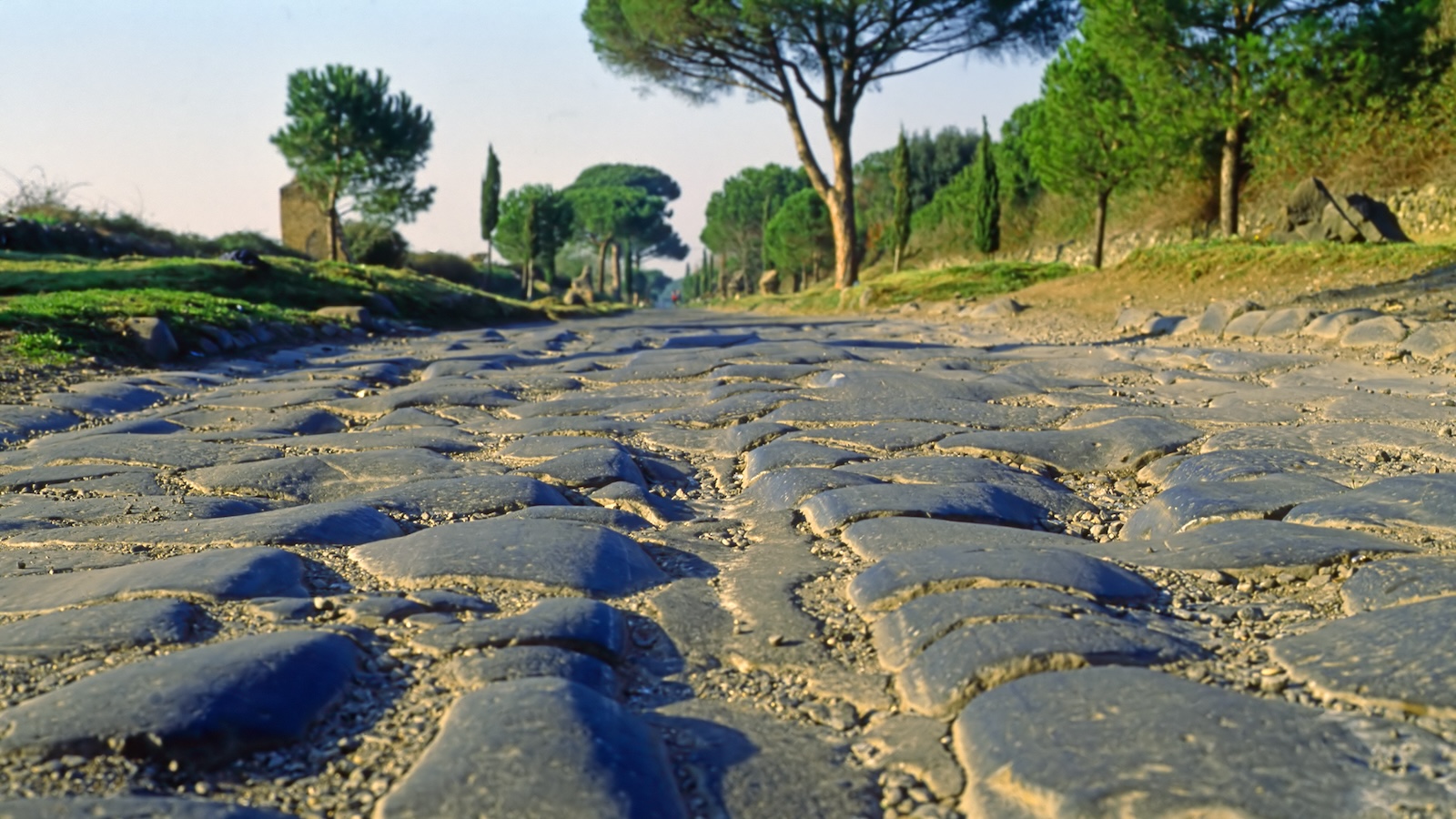
By Allison Emmerson
The first branch in Rome’s famed highway system, the Via Appia Antica has been celebrated since antiquity as the Eternal City’s chief façade. The road was laid out by the Censor Appius Claudius Caecus in 312 BCE to link Rome with Capua in central Campania, allowing for easier movement of troops and representing the city’s expanding domination of southern Italy. As Rome’s power grew, so did the course of the highway. By 190 BCE the Via Appia had extended to the major southern port of Brundisium, opening the whole of the eastern Mediterranean to Roman troops. Alongside military action, however, the Via Appia invited new opportunities: for trade, travel, and intercultural connection. From its dedication, Roman elites built status by establishing luxurious villas along the road, and by the early Imperial period, the Via Appia’s prestige was unmatched. According to the Roman historian Livy, it formed the entrance hall for the whole of the city (in vestibulo Urbis), while the poet Martial called it the most famous of roads (maxima fama viae). It was the poet Statius, however, who in the second half of the first century BCE gave the Via Appia its most lasting title: the regina viarum, “queen of highways.”
Today the Via Appia lies forgotten along much of its route, emerging only occasionally under a rural lane or alongside a farmer’s field. Xu Bing undertook his rubbing project in such a rural landscape, bringing his team to repopulate the ancient road. In the countryside outside of Rome, however, larger swaths survive, traveled by tourists who come to see the highway itself. As a result, the Via Appia now draws together a population that extends well beyond the borders of ancient Rome. Likewise for the community of artists and scholars at the American Academy, Rome’s first highway remains a place of exploration and connection.
As a Rome Prize fellow in 2019, my colleague Liana Brent walked the entire route from Brindisi over a period of three weeks in the spring of our fellowship year; one of my fondest memories from that season was the final day of her hike, when we all trooped down the hill with flowers and champagne to greet her as she reentered the city. As Interim Mellon Professor, I’ve connected with this year’s community on the Via Appia as well.
We traveled the first mile together on one of the Academy’s famed Walks and Talks, discussing life on the margins of Rome and how it has changed through time; in the following weeks, fellows returned to the Via Appia in smaller groups and with their family and friends. Although the queen of highways emerged from Rome’s militaristic past, its role as a connector has been far longer lived, tying the past to the present and us to each other.